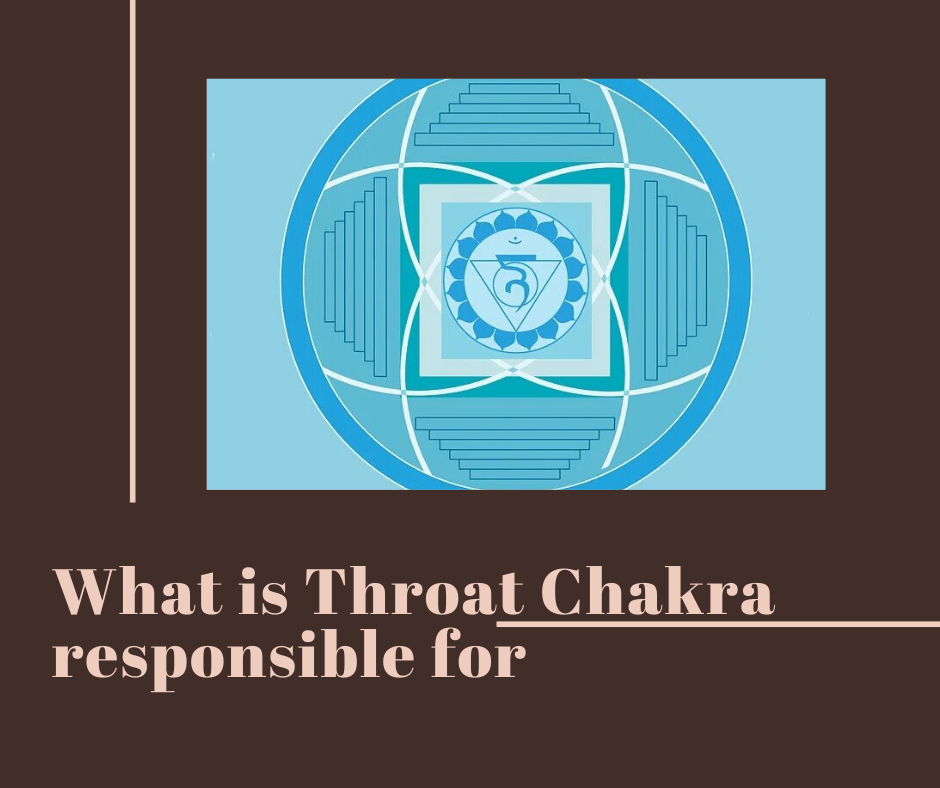Meditation for beginners does not have to be difficult and unattainable. I have been meditating for several years. With varying intensity and frequency. There were periods when I meditated every day, there were also periods when I forgot this habit for a long time. However, I always came back.
Earlier, I read for a long time about the beneficial effects of meditation, but something still bothered me to start. Then, when I made up my mind, I was still struggling with the idea that I was doing something wrong, that I didn’t see any special results. Today I know that these are all myths and only my beliefs.
In retrospect, I can see that the periods in which I meditated regularly were somehow so surprisingly periods in which I had the best mood and mental form.
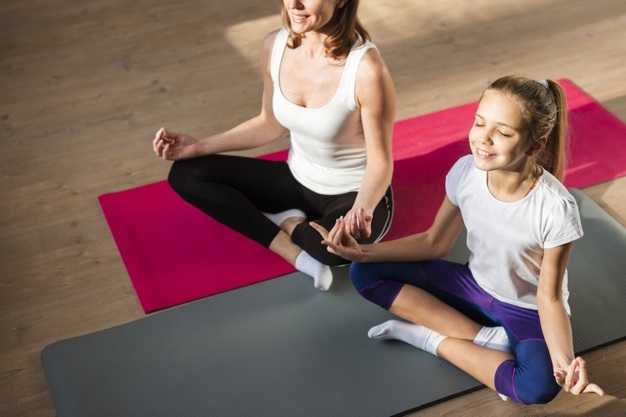
(Freepik.com)
4 Myths about Beginner Meditation
First, meditation may or may not be related to religion. Of course, there are plenty of meditation schools, there is Buddhist and Christian meditation (and a lot of other meditations), but I’m not interested. My meditation is not related to any religion, although it is a spiritual experience.
Secondly, you don’t have to sit in the lotus position during meditation as a beginner, you don’t have to sit at all! Naturally, different schools recommend different positions – lotus, half-lotus, etc. I often meditate lying down, because I’m just so comfortable.
Third, you don’t need money, a lot of time or any gadgets for meditation being a beginner. I know there are plenty of meditation mats and pillows and many guides require a minimum of 30 minutes of meditation every day. That’s not mandatory (if you can’t spare 30 minutes a day).
Fourthly, beginner meditation is not about getting rid of thoughts! It seemed to me that too, which meant that the more I tried to get rid of these thoughts, the more there were.
Our brain is a great factory of thoughts that constantly arise, often unconsciously. When we calm down in meditation for a moment – they hit with doubled strength, mainly because we are finally aware of them.
Also Read: Simple Guided Meditation for Anxiety and Stress for Beginners
Several techniques help in dealing with the flood of thoughts, but above all the awareness that during meditation we are not to get rid of thoughts, just accept their fact and “let go”, look at them from a distance.
Meditation allows me to fight rumination by understanding that thoughts are not some abstract force independent of me – you can consciously shape your thoughts, really.
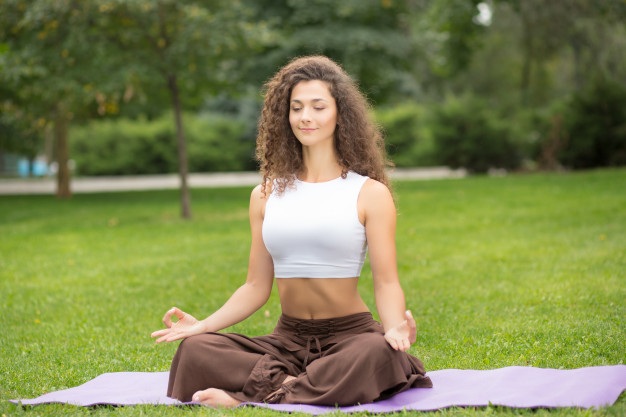
(Freepik.com)
What is Meditation?
For me, meditation means accepting things as they are and not trying to change. I meditate to calm my disturbed, distracted mind, but I normally do not expect any kind of instant and effective results from my meditation. Rather I would like to mention here that I don’t expect anything from meditation. I just try to always be with myself (I guess, we all must try the same), to accept the situation as it is I’m in and to change it gently if it’s possible.
I know it sounds terribly spiritual and complicated, like many beginner meditation guides. So I will give you an example: a few days ago a certain person annoyed me terribly. She accused me of dishonesty, while she wanted to take the opportunity to get something herself.
I got annoyed. I said what I thought about it and closed the topic. However, the tornado of thoughts in my head was still raging in an unpleasant form – I was pondering this situation, retorting my thoughts in an increasingly sophisticated way, my emotions were going down, I couldn’t close the situation and move on.
I am very aware and I knew that what was happening in my head was very bad for me, but hey, what a disgusting woman! Of course, I censored myself, the original word was a lot worse. Anticipating comments – yes, I sometimes cruelly curse.
Anyway, I knew that this situation was not good for me and to cleanse my head before bed (and to fall asleep at all) I decided to meditate a moment (Related: How to Meditate before Sleeping). I closed my eyes, began to consciously breathe (for more breath later in the text) and look at emerging thoughts and emotions. I did not deny that they appear.
I did not deny my anger and regret. I accepted that they appear – after all, it is a normal reaction to an unpleasant situation and the associated stress. I used the technique with colors (I will write about it in a moment) and tried to focus my attention on my breath.
And what now? Was it rainbow and pink and nice? Of course not. Meditation is not a magical tool that made me suddenly stop getting angry, but I began to calm down very slowly, VERY SLOW. This situation tired me for one more day, Eventually I got free from it.
Simple Meditation for Beginners – What and How?
Body Position / Posture – I usually meditate lying down or sitting down. I try to connect my thumb with my index finger in both hands.
I know this is a technique supposedly to facilitate the flow of energy in the body, but my reason is more prosaic – just if I don’t do it, I feel that I don’t know what to do with my hands during meditation. Somehow I feel incomplete then, however ridiculous it would sound.
I do not cross my arms (or legs if I meditate lying down) – I let them lie freely. I also take care not to tighten my stomach – for me, tensions often accumulate in my stomach and I need to be able to breathe freely through my diaphragm.
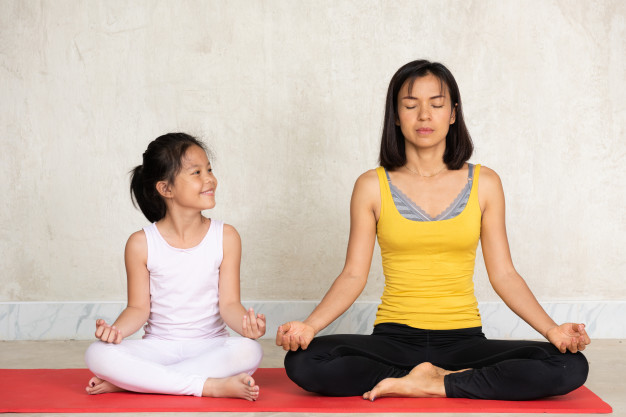
(Freepik.com)
When and where to Meditate for a Beginner
I meditate in the morning or evening – depending on the needs and the time I have. I also meditate when I need it during the day or while traveling – then all you need is a comfortable place to sit down and close your eyes – that’s all.
I don’t have meditation corners, nor do I make meditation dependent on any external factors. I can lie on the bed, sit on the sofa, go out to the terrace or garden.
Beautiful circumstances of nature will certainly make meditation training more enjoyable, but they are absolutely not necessary. Finally, during meditation I go on a trip deep inside myself, not to the forest.
Also Read: What is Mindfulness Meditation? – How to Practice
How long a Beginner should meditate?
I started my meditation for 2 minutes. Seriously, for 2 minutes. And that is enough to start with and I could even say that it can be a big challenge. Then I extended my meditation time, but it never lasted more than 20 minutes. I prefer it regularly, but less. Such mini-meditations for beginners act as power naps.
The rule is very simple – I set the alarm clock on my phone, then mute it for other sounds and meditate until the alarm clock rings. At first, it was hard for me to stand doing nothing for a very short 2 minutes! After all, beginner meditation is nothing but structured doing NOTHING.
Several Simple Meditation Techniques for Beginners
First of all, I must tell you that I am not a meditative guru, but I have studied and practiced a lot about meditation, I have no courses and certificates as of now, as I’ve been teaching meditation to students and beginners locally and a little bit online only.
Of course, I read a lot, I was looking for gaining more knowledge, but now I base myself solely on my experience, collected over many years.
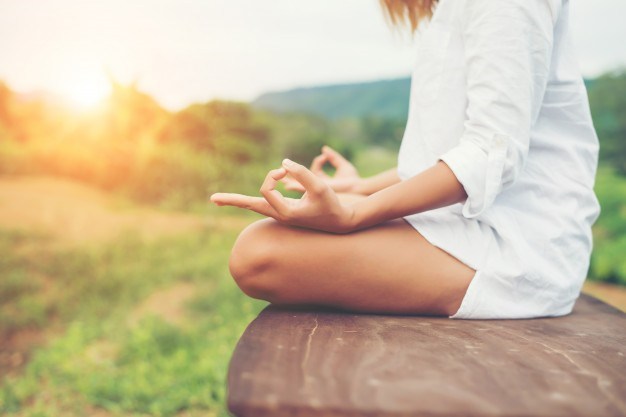
(Freepik.com)
Meditation Technique of Conscious Breath for Beginners
Conscious breath is the most important aspect of meditation especially for beginners. Breath is the activity that most strongly affects the body – fast, shallow, broken breath is often the result of effort, stress and rush – consciously deepening the breath, we help the body deal with stress and e.g. cortisol ejection.
My friend is a sports psychologist and I once had the opportunity to try the equipment with which she worked. I can’t remember its name for anything, but it hooked me up to various sensors that were supposed to monitor my body’s response while a graphic visualization of my well-being and stress level was displayed on the monitor.
It was about checking whether I could, for example, keep my body relaxed in a minute. The test took place at a meeting where there were also a few people I didn’t know. I got up from the chair to come over and … fell out like long, tripping over a cable.
Also Read: Easy and Quick Meditation for Deep Relaxation
I got up, it was terribly stupid, but did not pay attention to it at all, only quickly hooked me up to the device, which of course immediately showed how much this situation stressed me. My job was to calm down in a minute. I closed my eyes and began to breathe deeply. Managed to.
Deep breathing is not a skill we are born with. Men have it easier because they breathe diaphragm naturally, women must learn it.
In high school I belonged to two choral groups – amateur, but recognized and awarded at festivals in the country and abroad. There, learning classical singing, I learned to breathe. Because without proper breathing there is no good sound.
Deep breath is breath to the diaphragm. It’s easy to check how you breathe naturally – just lie flat on your back and put 2 books on top of yourself: one on your stomach, the other on your chest and breathe normally. Which one will rise?
Breathing with your diaphragm can be done in exactly the same way, lifting the book on your stomach or without weight, but consciously paying attention to it during meditation is important for a beginner. At first it will be very unnatural, I know, but after a while reflex and ease will appear.
During the meditation of conscious breathing, I try to breathe evenly and deeply (but without forcing the pace), repeating in my mind ‘inhale’ and ‘exhale’ – I focus completely on this activity. At first, sometimes I try to lengthen my breath in and out to calm my body, then I care for an even, unforced rhythm. ‘Inhale’ and ‘exhale’ – that’s all that’s important at the moment.
The 2 Color Technique – Simple for Beginners
This beginner technique of meditation is also related to breath. When I breathe in, I visualize that I breathe in clean, clear, light, refreshing blue air and with the exhale I release all negative energy in the form of dark green, darker, ‘ugly’ and ‘used’ air.
I take lightness with my breath and get rid of everything that is bad (e.g. bad thoughts) with my breath. And that’s it, that’s all the technique. It may sound trivial, but it helps!
As per my personal suggestion; this is a wonderful and most simple meditation technique for a beginner who’s just starting out. Though you can choose any of the meditation techniques, however, I would personally suggest you to start with this and then move on and try other meditations being a beginner.
Meditation Technique of Clouds and Balloons – Simple & Cute for Beginners
Sounds cute, right? It is very useful if we want to learn to observe our thoughts from a distance during meditation.
When I meditate, I try to be very aware. When I feel that my head is draining and between ‘inhale’ and ‘exhale’, I persist in thinking, e.g. about the work that awaits me, I do this exercise: I think ‘think, think!’ And then I visualize that I enclose this thought in a balloon, or put it on a cloud, which flies slowly into the sky and disappears behind the horizon.
Sometimes, when I have a hard day or a difficult time – such balloons, even during a 5-minute meditation, let go so much that they could be used in the tale “Departure”! It’s nothing, I accept this condition.
So, that was from me today about beginner meditation. I sincerely hope you find a useful meditation being a beginner. I’ll be happy to read about your experiences with meditation – the good ones, but also about the difficulties or doubts, if any. I will try to help if I can!

